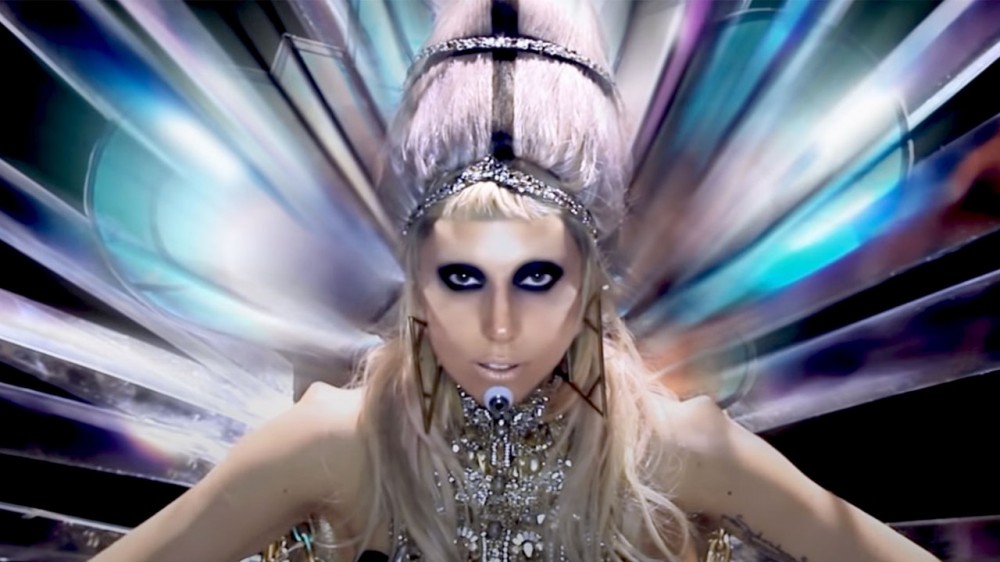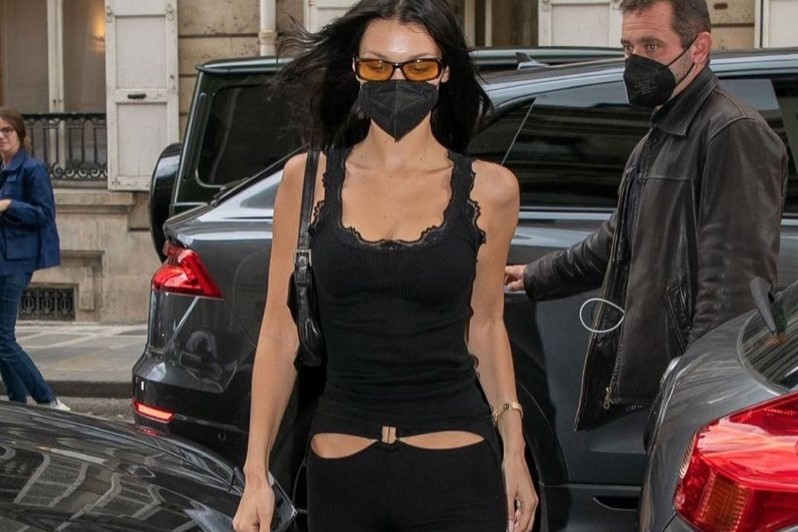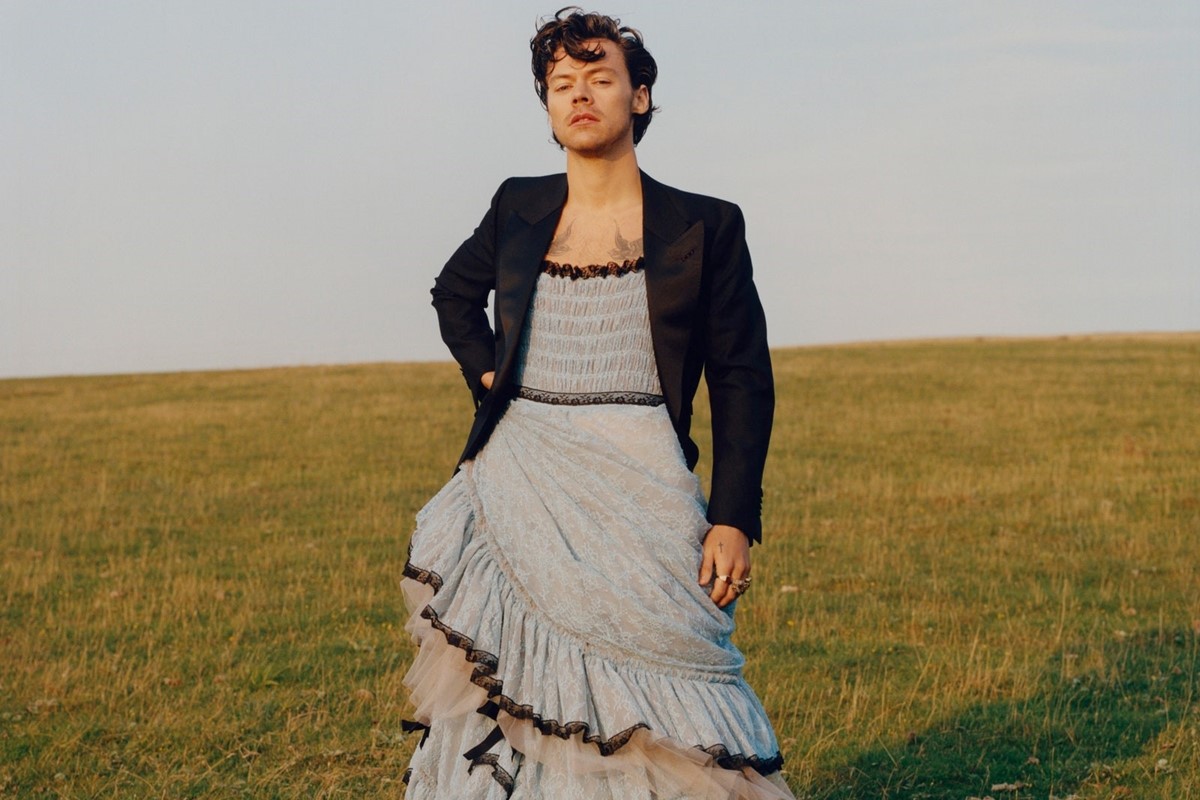
Born This Way’s Fashion and Message Remain Powerful a Decade Later
There’s no denying Lady Gaga’s impact on music. A decade ago, the star cemented her status as one of the most influential artists around with the release of her second studio album, Born This Way. Led by an anthemic title track that focused on self-acceptance and unity, the album introduced another side of Gaga to the public. Though she’d always celebrated the diversity of her audience and peppered her lyrics with messages of hope, those issues moved to the forefront in Born This Way. An all-out celebration of her LGBTQIA+ fans, as well as a chance to push the boundaries of pop presentation, it became the star’s magnum opus.
The fashion of Born This Way was equally as iconic. Gaga had already had her share of headline-making outfits—meat dress, anyone?—but the fresh look for the new album was a full-scale reinvention that played with the codes of performance art to express the albums’ themes fully. “The Fame was pure pop, and she was living in that world for a while, but she started communicating with her fans and getting to know their problems,” explains Nicola Formichetti, Haus of Gaga's longtime fashion director. “She was the first pop star to build this kind of relationship through social media. I remember her saying, ‘we need to do more. We need to create music and messages that are much deeper.’ Gay rights, gender equality, racial equality were all being talked about and fought for during that time, and they still are now. [Gaga] wanted to create a celebration of equality, one that would resonate with the listeners.”
Creating a visual representation of those ideals required thought, especially when it came to the “Born This Way” track and its accompanying visuals. Months before the album’s release, the Haus of Gaga team—Formichetti, makeup artist Sarah Tanno, hair stylist Frederic Aspiras, and designer Brandon Maxwell— bounced ideas off each other. They had a sense of the era’s vibe thanks to previews of the tracks but hadn’t settled on an aesthetic. “That’s always how our creative process works; we’re there creating based on feelings and our reaction to things,” says Formichetti. “We don’t come in with a mood board. We might start there, but when it’s time to decide, we are there creating on the spot, taking lots of different elements and mixing them up.”
The earnest nature of the song’s lyrics presented a challenge. “It’s an incredibly powerful song, but it could be seen as cheesy because it’s so celebratory and not trying to be cool,” explains Formichetti. “At the time, it all felt so new and strange. When we were discussing the looks, we didn’t have one specific concept in mind, but we wanted to show multiple versions of Gaga, all different but given equal importance.” Photography legend Nick Knight was on hand to shoot the album’s visuals, and his stylized images led the team to strip [things] down. The pictures which feature Gaga in front of a backdrop with pointy shoulders, platform heels, or her body morphed into a motorcycle keep the focus on the performer. “When in doubt, call Nick,” says Formichetti. “During the shoot, he was like, ‘lets go back to the bare minimum and just start creating.’”
For many, the first visual that comes to mind when they think of the album is that of Gaga decked out in horns and cheekbone ridges, her features reimagined thanks to the hard edges of latex prosthetics created by the special effects makeup masters at Millennium FX. “We had this extraterrestrial alien look that we were going for, but also very religious,” says Formichetti. “Pure and stripped down to basics, into embryo form.” That rebirth led to collaboration with Dutch artist Bart Hess, whose “slime dress” features in the song’s video and album shoot. “The album has this rock n’ roll feeling that is in Gaga’s DNA, but how do you take that and make it feel new and alien?” says Formichetti. “We worked with Bart on a goo that almost looks like an embryo or something that has just been born. We started to take these themes that we loved and just went deeper with them.”
When it came time to film the Knight-directed music video for ‘Born This Way,’ Gaga and her crew had an inkling of how important the clip would eventually become. “She wanted to create a manifesto with that video,” says Formichetti. “It’s a song about empowerment and freedom, so of course, we wanted the look to be powerful and fearless. At the same time, you want a duality, to show the darker side of the fantasy—good and evil.”
Alexander McQueen’s irreverence perfectly reflected that duality, but Formichetti wanted to honor the hallmarks of the McQueen look without pulling from the designer’s archives. After leaning into his Plato’s Atlantis spring/summer 2010 collection for the ‘Bad Romance’ video, Formichetti wanted to go in a different direction. “The spirit of McQueen inspired us, but we didn’t use his clothes,” says Formichetti. “Instead, we wanted to show the goddess look without using his clothes, the headdress, the big hair, these otherworldly silhouettes.” Named creative director of Mugler in 2010, Formichetti instead mixed custom pieces from the brand, like those towering knife platforms, with museum-worthy originals from artists like Petra Storrs. The latter made the video’s memorable stained glass dress. “Gaga has such respect for the fashion world, its creatures, and creative people in general,” says Formichetti. “So we’re always working with incredible designers, be it people we love from the past or next exciting talent.”
The video’s theatricality carried over into the real world thanks to events like the Grammys where Gaga arrived in a Hussein Chalayan egg she would later hatch out of and the Born This Way ball tour where she cycled through creative looks daily, including special piece from Versace and Moschino. A special pop-up at Barneys offered fans another way to dive into the album’s world. “It was pop culture entertainment,” says Formichetti. “We wanted to keep people excited and continuously surprised.”
The song and album became a rallying cry. For so many fans, its assertion that all people are beautiful, valuable, and essential is as powerful today as it was ten years ago. “There’s a reason why it’s still relevant,” says Formichetti. “Born This Way is a celebration of people and our differences, the importance of freedom and equality. Back then, it was still a bit taboo to speak about some of these things openly, but now if you look at what’s happened, you can see where the song has become a motto, and its message has proven so meaningful.”



